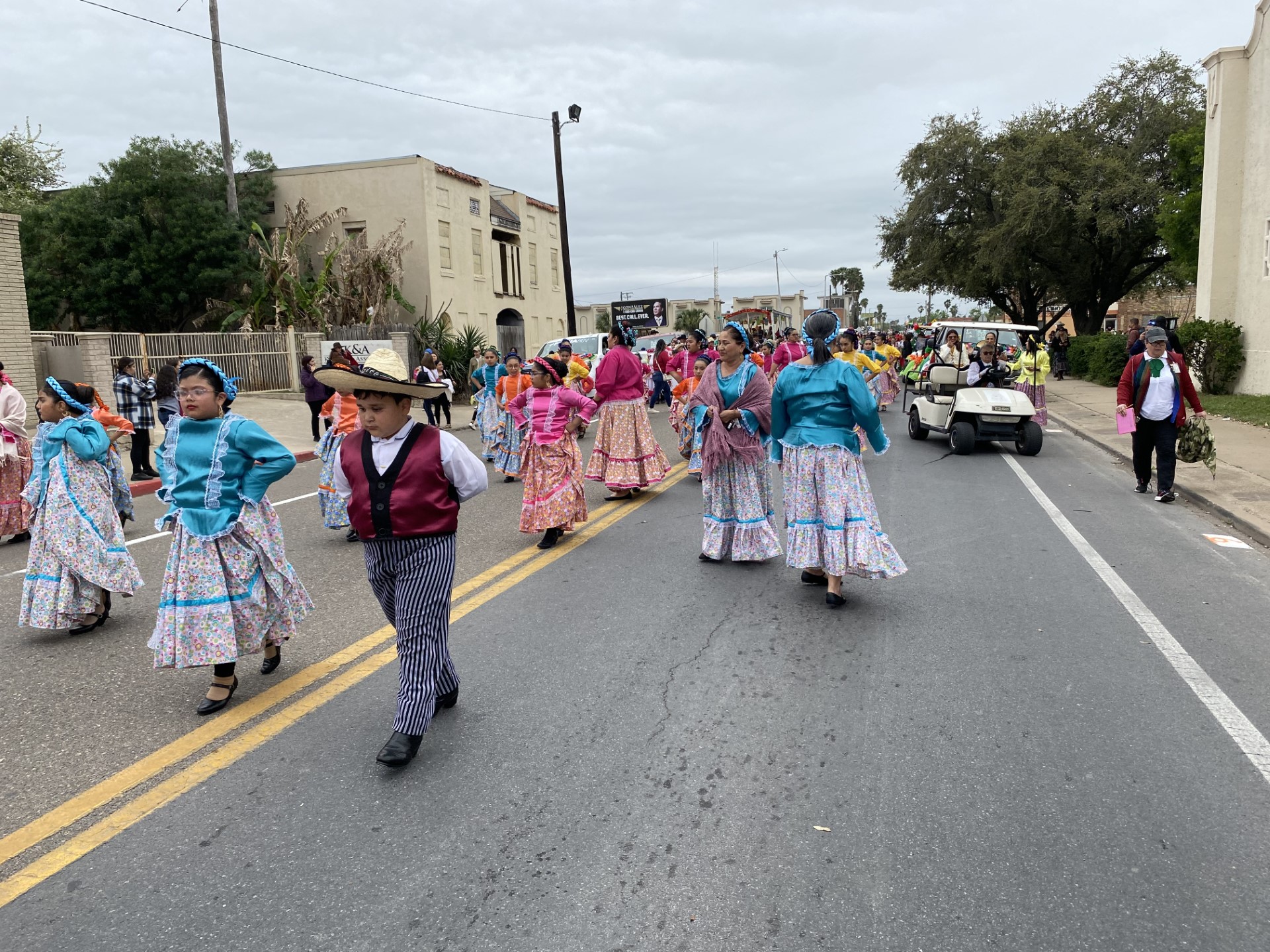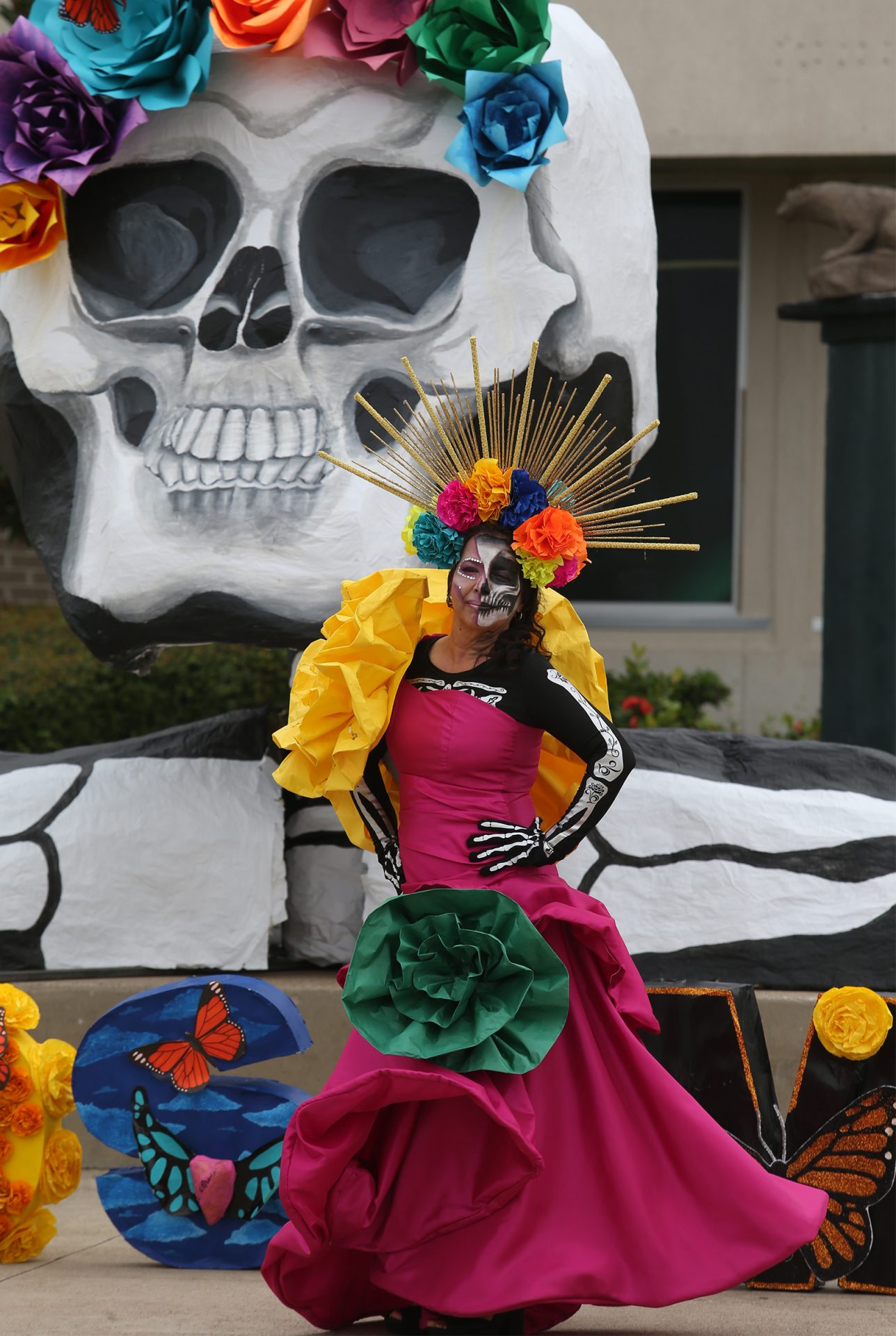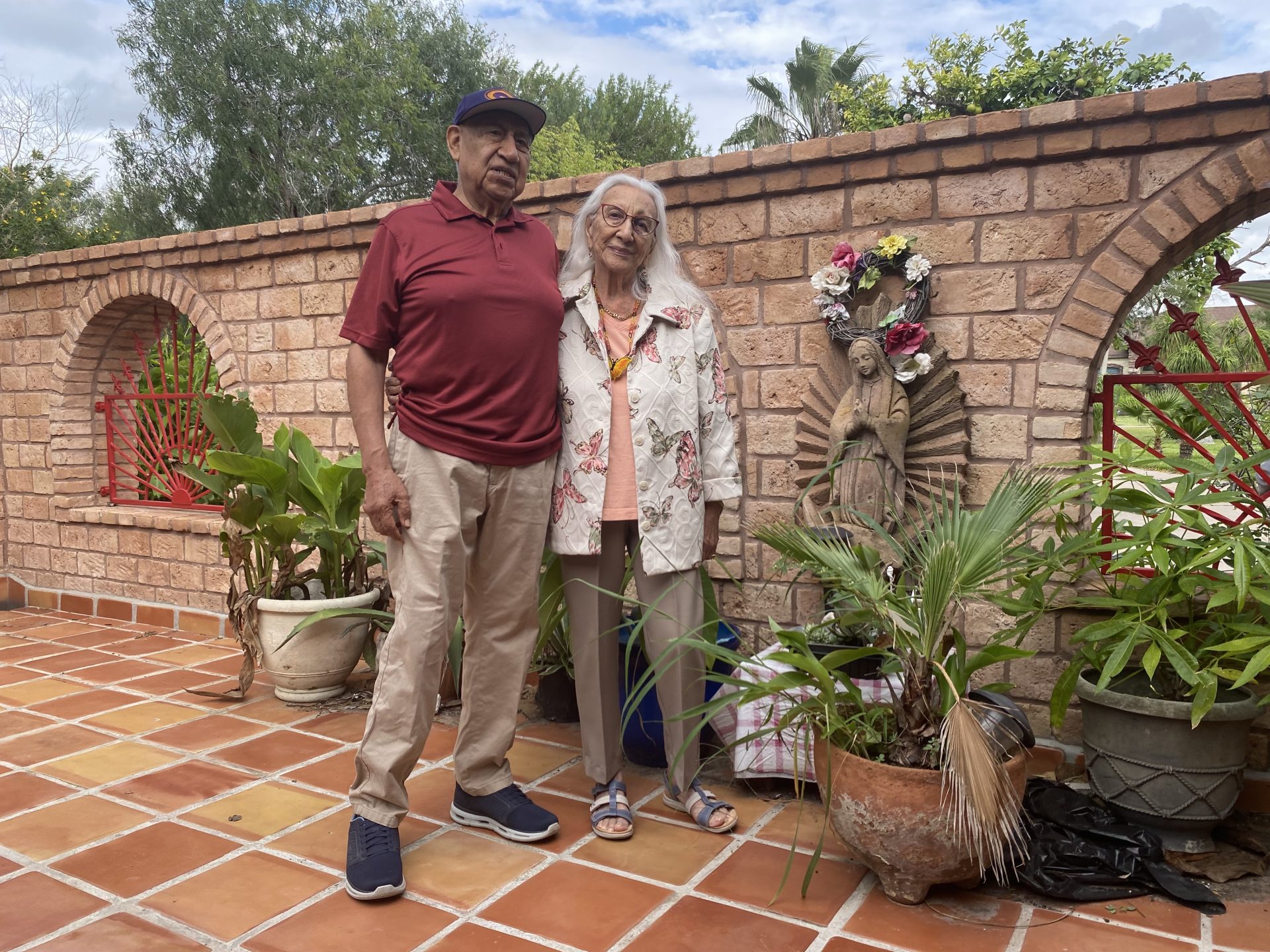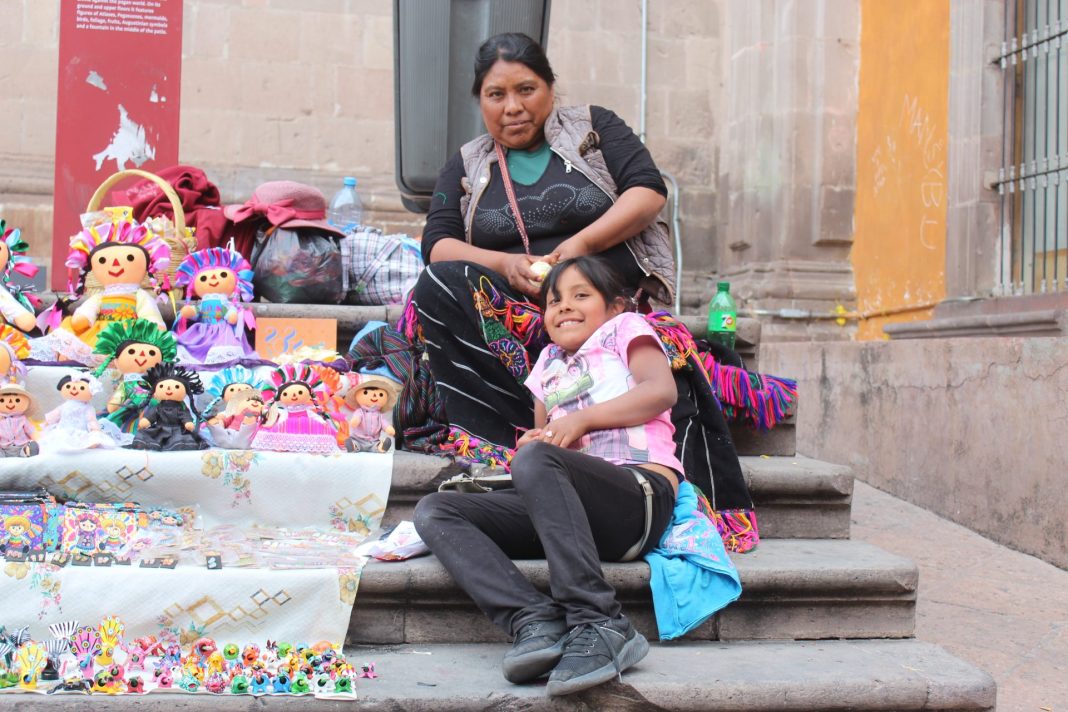|
Only have a minute? Listen instead
Getting your Trinity Audio player ready...
|
Dona Juana Alonso Hernandez in her corn-colored skirt and blue sash and red necklaces sits on a woven mat and leans forward to tend the corundas roasting on an open fire in her stone hut.
The corunda is a type of tamale specific to the Mexican state of Michoacan. Dona Juana, a member of the Purepecha tribe, hands one to me and I eat slowly to savor every bite. I wish to savor not only the bite of the corunda but also every moment visiting with Dona Juana and her family in the village of Cocucho in 2008.
In the city of Queretaro, the capital of the Central Mexico state of Queretaro, two Otomi women in January 2024 demonstrate their hand embroidery skills for potential customers.
They sit on the sidewalk with their crafts and the older woman wears a blouse that is an intense pink and contrasts brightly with her green pleated skirt. The younger woman next to her wears a lighter pink dress and holds up a large cloth embroidered with violet flowers and green vines. The doll in front of her wears a dress of light blue panels.

At Charro Days in Brownsville early this year, children in colorful dresses move down Elizabeth Street passed parents and grandparents and sisters and brothers and all who love culture and especially Mexican culture.
The girls with festoons of color woven through their hair have faces all smiles and eyes dancing. They move rhythmically through the chilly afternoon.
It’s the kids parade, and dance groups from different schools wear the traditional clothing of a particular state in Mexico. The girls from Southmost Elementary representing Queretaro wear shawls with panels of bold blue and pink and orange over their blue dresses, and ribbons decorate their hair.
And Monday afternoon my good friend, the retired professor Enriqueta Lopez Ramos in San Benito, spoke joyously of Diez y Seis, the day the Rev. Miguel Hidalgo shouted the grito to declare Mexico’s War of Independence.
“I’m wearing Mexican,” she said happily. “Everyone I’ve seen today is wearing Mexican.”
Ramos, who worked closely with Civil Rights Activist Cesar Chavez to achieve equality for Mexican-Americans, was referring to the three colors — red, white, and green — that she and others were wearing Monday. These are the colors of the Mexican flag.

Hidalgo gave his “Cry of Dolores” in the early morning hours of Sept. 16, 1810. He was holding mass there in the city of Dolores in the Mexican State of Guanajuato. That town is now called “Dolores Hidalgo.”
“At that time Spaniards were the only ones that could own land, the only ones who could have an education, the only ones that could do anything,” Ramos explained.
Native Mexicans, those with both Indigenous and Spanish blood, had no opportunities to achieve anything or excel at anything, she said.
A long and bloody war ensued. Hidalgo and Jose Maria Morelos y Pavon, another figure in the War of Independence, had attended college in the City of Valladolid, now known as the city of Morelia which is the capital of the Mexican state of Michoacan.
The initial rebellion was put down. Hidalgo, Morelos, and two others were executed, and their heads were on hooks at the Alhondiga de Granaditas in the city of Guanajuato for ten years.
Mexico finally achieved its independence from Spain in 1821, an achievement now celebrated with jubilance every Sept. 16.
That same spirit drove the Mexican Revolution in 1910 when Indigenous people were tired of only a few people having large haciendas and they were only able to work the land. The oppressive nature of Porfirio Diaz’s rule pushed everyone to the limit and ultimately led to a Mexico more accepting of its native cultures.
Those Indigenous cultures — Purepecha, Otomi, Nahua and so many others — have contributed to a national culture filled with colors.
In the city of Morelia in the Plaza Juarez people stroll or linger or ride skateboards beneath the towering African tulip trees with their bright orange flowers. The lavender blossoms of the jacaranda trees seem to have a cooling effect on any afternoon or activity. The loud and snapping clack-clack-clackety-clack announce another performance of Los Viejitos. They dance slowly, then feverishly, the bold blue and orange geometric designs on their white cloth costumes shaking with great revelry.

The colors draw visitors from the northern places who descend here to satisfy their hunger for color and passion and beauty. They gather at the crafts fairs at Dia De Los Muertos in Patzcuaro and at Domingo de Ramos in Uruapan and purchase the glistening pineapple pottery from San Jose de Gracia. They like the glistening greens and the shimmering yellows and reds and the blues which will decorate their homes.
The norteamericanos for decades have visited the places south of the border and have returned home with a taste and an adoration for what they’ve experienced. Immigrants from Mexico have also brought with them a part of their home culture while assimilating into their new home. This kind of variation and change and the introduction of the novel make possible the vitality crucial to the survival of any culture or any endeavor or any individual. The loss of novelty creates a static presence which slowly crumbles, like a village or a society where no babies are born.
But our southern neighbors offer us a way out of this decay and offer newness and rejuvenation. My good friend, Ramos, has seen how this slowly evolving and innovating through the pipeline from Mexico has impacted American society.
The handmade furniture from places in Mexico like Cuanajo has become increasingly popular, even more so with shoppers in Nuevo Progreso seeing them for sale and feeling compelled to make the purchases. Winter Texans prefer to get the better spices across the border.

Ramos recalled how her late husband, an engineer, would travel to Mexico to purchase guayaberas. When he wore them to work his colleagues would ask about them. On his next trip, he would take their orders and make purchases on their behalf.
Today, guayaberas are everywhere.
The cultures south of the border have slowly become more present north of the border. In the late 1960 and early 1970s I lived in a Hispanic neighborhood in Corpus Christi. A boy named Felix invited me to his birthday party where someone put a blindfolded on me and handed me a stick. I knocked a huge hole in a pinata, something I had never heard of until the party, and kids were clamoring about me to grab the candy.
Someone placed a bag of candy in my hands and said, “You broke the pinata.”
Editor’s note: This story is comprised of notes and insights from Valley Morning Star staff writer Travis M. Whitehead during his visits to the Mexican state of Queretaro.




